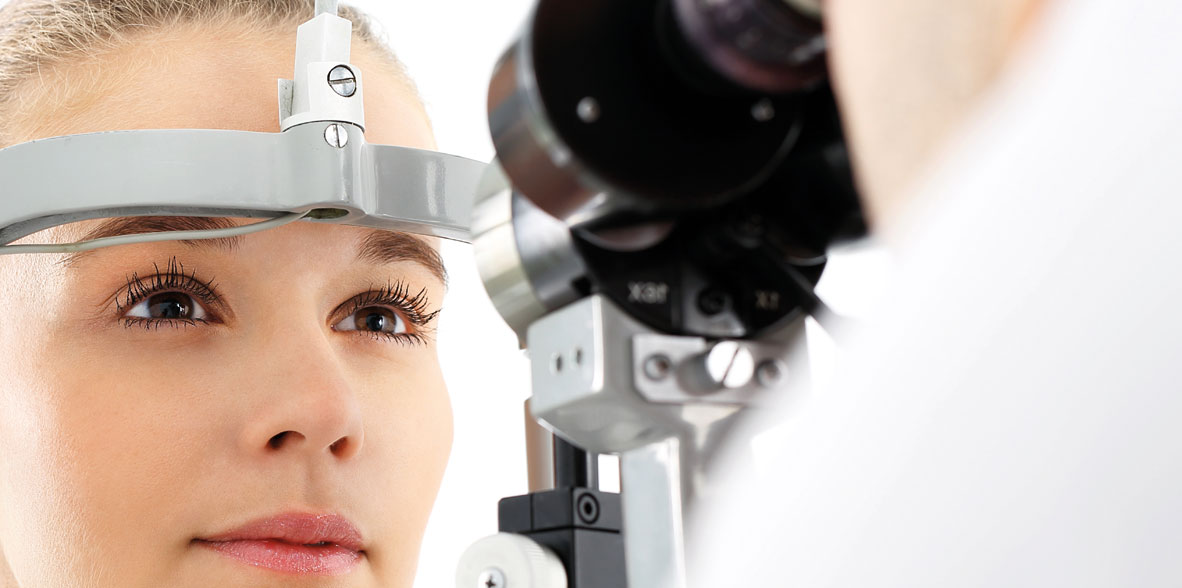

 Centro Médico Teknonen/health-centers/centro-medico-teknon
Centro Médico Teknonen/health-centers/centro-medico-teknon- Centro Médico Teknonen/health-centers/centro-medico-teknon
 Centro Médico Teknonen/health-centers/centro-medico-teknon
Centro Médico Teknonen/health-centers/centro-medico-teknon
The retina, innermost layer of the eye globe, is a transparent tissue composed of many photosensitive cells which receive light stimuli and transmit them through nerve terminals to the brain. There are 2 types of photoreceptor cells: cones and rods.
Cones function better in daylight and are specialized for color vision. Rods are more numerous and function in evening light or darkness. Cones are more plentiful in the center of the retina, also called the macula or fovea, and rods are found in the periphery. When cones and rods are stimulated by light, they generate impulses which are transmitted through their own nerve fibers, which in turn come together to form the optic nerve.
The retina is fed by retinal artery vessels and by capillaries of the choroid, the outermost vascularized layer of the retina.
- The vitreous
The vitreous is a transparent, gelatinous substance which occupies the inner part of the eye, providing support to the retina. It has no nutritive vessels, since it would lose its transparency. Over the years, the vitreous may lose its consistency and separate from the retina, causing deposits which are perceived as threads or spots that move with the eyes; these are more visible in bright light or when looking at light-colored walls or objects. These deposits are referred to as myodesopsia, "floaters", or "mouches volantes". Usually they do not indicate any kind of disease, nor do they represent any risk to one's vision; however, if they are perceived, one must rule out the presence of any coexisting pathology in the retina or vitreous.
- What are the main problems of the retina?
The retina can be affected by:
- Many general diseases, such as diabetes or ocular hypertension (high eye pressure)
- Inflammations or infections
- Vascular irregularities such as thrombosis or embolisms
- detachments which produce loss of vision in one part of the field of vision, or in its entirety
- Degeneration, its most frequent and important instance being age-related macular degeneration
- How to diagnose these diseases?
Diagnosis of all these diseases is important in order to provide early treatment. For this purpose we have many techniques and instruments at our disposal, most notably: retinoscopy (observation of the retina and vitreous with or without dilating the pupil), fluorescein angiography, computerized campimetry, and for some time now, optical coherence tomography – a very high-precision, latest-generation instrument for studying the retina.
Irregularities in the layers of the retina which nourish and provide oxygen to the pigment epithelium are the cause of age-related macular degeneration (AMD). This can be either dry or wet (exudative) AMD, the latter being characterized by the appearance of blood vessels, which can give rise to hemorrhaging and accumulation of liquid between layers of the retina.
With AMD, the patient will report irregularity in the central vision of the affected eye, image distortion or deformity.In such cases, the Amsler test offers a simple method for monitoring symptoms.
Recent years have brought to light the so-called antiangiogenic substances. When injected into the inner eye, they often make it possible to control loss of vision or even to improve it, in some cases of exudative (wet) age-related macular degeneration.
With the help of the latest technology in ophthalmological exploration, we are able to detect retinopathies in the earliest stages of macular degeneration, when the patient may not report any kind of symptoms. This is the case with Optical Coherence Tomography (OCT).

This technique examines retinal layers through images, visualizing a cross-section of the desired area of the retina. The slightest irregularity among the layers (as in cases of AMD) is projected, measured, compared and monitored, thanks to the different visual perspectives offered by the software. Even 3-D imaging of the retina can be obtained.
A database of population studies is incorporated, giving us automatic comparisons of the thickness of retinal ganglion fibers which lead to the optic nerve, and in this way assess their normality. This is especially useful in the case of patients with glaucoma, both as a support to diagnosis as well as in monitoring its development over time.



































